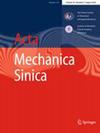Adaptive feedback compensation control method for bipedal robot walking under continuous external disturbances
Abstract
In the past few decades, people have been trying to address the issue of walking instability in bipedal robots in uncertain environments. However, most control methods currently have still failed to achieve robust walking of bipedal robots under uncertain disturbances. Existing research mostly focuses on motion control methods for robots on uneven terrain and under sudden impact forces, with little consideration for the problem of continuous and intense external force disturbances in uncertain environments. In response to this issue, a disturbance-robust control method based on adaptive feedback compensation is proposed. First, based on the Lagrangian method, the dynamic model of a bipedal robot under different types of external force disturbances was established. Subsequently, through dynamic analysis, it was observed that classical control methods based on hybrid zero dynamics failed to consider the continuous and significant external force disturbances in uncertain environments. Therefore, an adaptive feedback compensation controller was designed, and an adaptive parameter adjustment optimization algorithm was proposed based on walking constraints to achieve stable walking of bipedal robots under different external force disturbances. Finally, in numerical simulation experiments, comparative analysis revealed that using only a controller based on hybrid zero dynamics was insufficient to converge the motion of a planar five-link bipedal robot subjected to periodic forces or bounded noise disturbances to a stable state. In contrast, in the adaptive feedback compensation control method, the use of an adaptive parameter adjustment optimization algorithm to generate time-varying control parameters successfully achieved stable walking of the robot under these disturbances. This indicates the effectiveness of the adaptive parameter adjustment algorithm and the robustness of the adaptive feedback compensation control method.

 求助内容:
求助内容: 应助结果提醒方式:
应助结果提醒方式:


